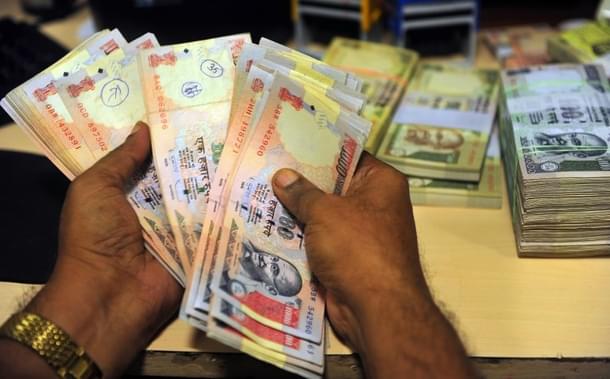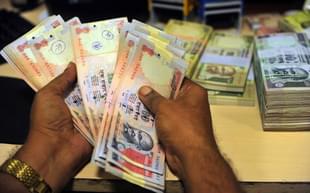Economy
Demonetisation’s Lesson: If There’s A Scam, There Must Be A Banker In It Somewhere
R Jagannathan
Dec 16, 2016, 11:03 AM | Updated 11:03 AM IST
Save & read from anywhere!
Bookmark stories for easy access on any device or the Swarajya app.


The raids on Axis Bank and some other branches of nationalised banks for allegedly enabling money laundering and illegal cash exchanges post-demonetisation should come as no surprise to anyone.
It does not need tax raids or deep investigations to prove that some bankers are joined at the hip with fraudsters. A CNN-News18 poll yesterday (15 December) showed that even the public attributes 50 per cent of the post-demonetisation problems to banks, even though the basic decision was that of the government, which duly got 44 per cent of the blame. The Reserve Bank of India (RBI) got only 6 per cent of the brickbats.
The public’s mood against banks may have been soured by the long queues outside branches and the discovery of new notes worth crores in the hands of crooks, but it also reflects an intuitive understanding that where money is involved, bankers cannot be uninvolved.
The reality is this: if there is a financial scam anywhere, there has to be a banker or a bank in the picture.
If you go through India’s long list of financial scandals, this fact should be apparent.
In 1992, when Harshad Mehta was running riot in bank treasuries, the scandal was wrongly labelled a securities scam, since Mehta was using banks’ holdings of dated securities to raise money for investment in stocks. But it was a bank scam, for bankers were eager to let Mehta take their securities in order to generate higher returns for them, at a time when rising interest rates were leading to losses on their securities portfolio.
In the stock market scam of 2001, run by Ketan Parekh, the bank that got caught in the melee was Global Trust Bank, which had imprudently lent money to many individuals to speculate in the markets. So when the markets tanked, Global Trust Bank reported huge losses and had to be merged with Oriental Bank of Commerce to ensure that depositors did not suffer.
In the Satyam scam of 2009, when promoter B Ramalinga Raju wrote to the stock exchanges that his company’s accounts were false, the key discovery linking the scam to banks was the amount of cash assets allegedly held by Satyam. Actual bank deposits were far short of what the company was disclosing in its quarterly results. Any banker could have spotted this, because the deposits being reported to investors were out of alignment with the meagre interest received by the company. Remember, banks work in consortia, and so bankers know what is happening in a company they lend to earlier than even the bank’s own auditors may know.
In the IPO scam of the mid-noughties (2003-05), banks were busy financing multiple investors for ensuring allotments. A Securities and Exchange Board of India investigation found that one Roopalben Panchal and five others were cornering share allotments in oversubscribed issues by making multiple applications, making a killing after listing.
Since banks were financing individuals without checking their antecedents, the RBI rapped seven banks on the knuckles, but with meagre fines of a few lakhs. The banks were ICICI Bank, HDFC Bank, Citibank, Vijaya Bank, Bharat Overseas Bank, Standard Chartered and Indian Overseas Bank.
In 2013, the RBI fined 22 banks for a more substantial Rs 50 crore after a CobraPost sting operation showed that bank officials were happily assisting crooks to launder money.
That no lessons have been learnt from all these bank scams is obvious.
The truth is money, whatever its colour, ultimately hits bank counters. And this can’t happen in substantial quantities without bankers knowing it – and actively aiding and abetting the illegalities.
There are only three ways to handle this menace.
First, large cash inflows and outflows into banks must be tagged to the individuals and their supervising authorities, and closed circuit cameras must record these transactions. The RBI has asked banks to ensure that the CCTV footages after 8 November are checked and not destroyed.
Second, all inter-institutional receipts and payments above, say, Rs 1,000 must compulsorily be converted to cheque or digital modes. This means companies, governments, clubs, associations – in fact any entity that is not a human being.
Third, there is no avoiding a banking cash transaction tax, which can be levied on payments exceeding Rs 10,000 in any week, whether made to individuals or companies, through bank counters or ATMs. Those who want the privilege of holding cash must pay for it.
The main learning from the skulduggery discovered post-demonetisation is simple: to prevent a scam, focus on what banks and bankers are upto.
Jagannathan is former Editorial Director, Swarajya. He tweets at @TheJaggi.




